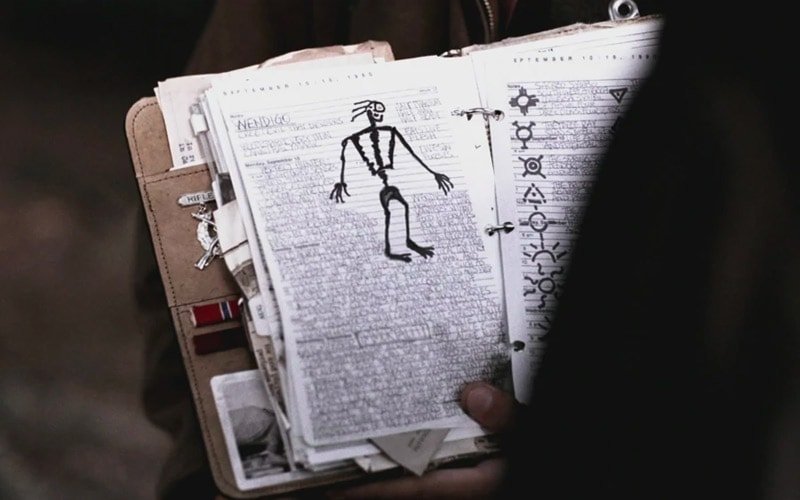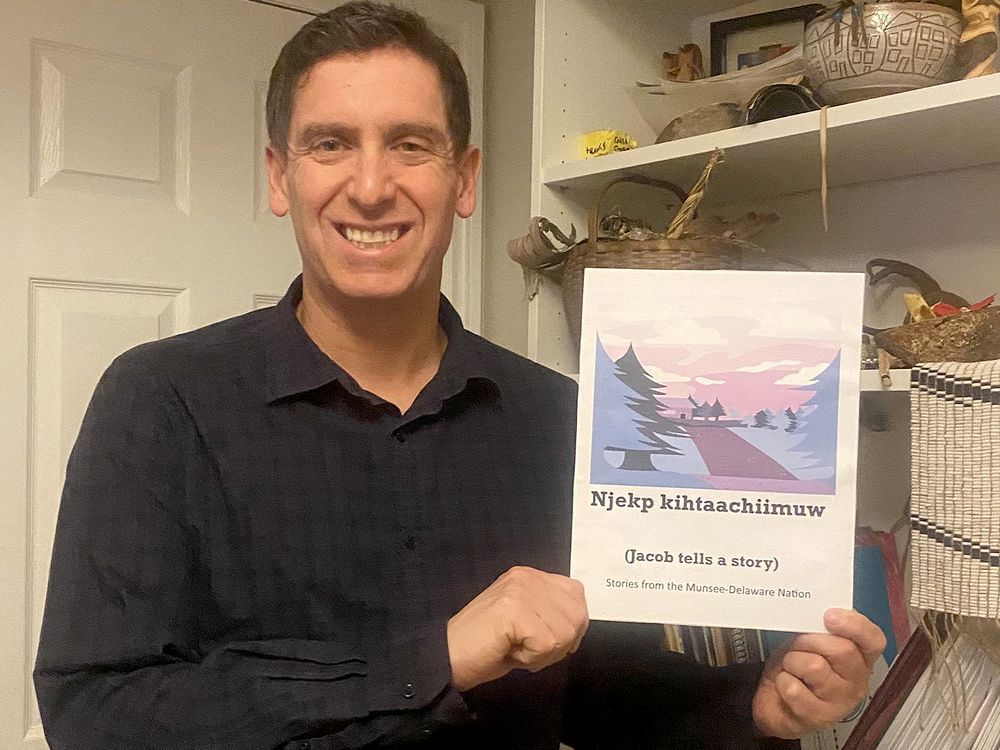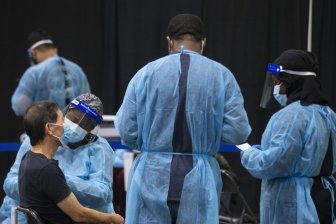MSN new Date?”Valid”:”Expired”}function a(){return i=i||void 0===i&&Object(o.a)().getObject(“1s-tokens”)||null,i}function u(e){r=e;const{accessToken:t,idToken:n,expiresOn:i}=e||{};t&&n&&i?Object(o.a)().setObject(“1s-tokens”,{accessToken:t,idToken:n,expiresOn:i}):Object(o.a)().removeItem(“1s-tokens”)}function d(){return r}},”8WO2″:function(e,t,n){“use strict”;n.d(t,”e”,(function(){return f})),n.d(t,”d”,(function(){return g})),n.d(t,”f”,(function(){return y})),n.d(t,”c”,(function(){return O})),n.d(t,”h”,(function(){return k})),n.d(t,”g”,(function(){return S})),n.d(t,”a”,(function(){return j})),n.d(t,”i”,(function(){return q})),n.d(t,”j”,(function(){return I})),n.d(t,”k”,(function(){return C})),n.d(t,”b”,(function(){return W})),n.d(t,”l”,(function(){return _}));var o=n(“ulS/”),i=n(“y+Kz”),r=n(“+uXD”),s=n(“HDSB”),c=n(“YBLW”),a=n(“FMyg”),u=n(“tMmC”),d=n(“pNSq”),l=n(“xYH4″);const f=”currentaccount”,g=365,h={newsAndInterests:1,windowsNewsbar:1,windowsNewsPlus:1,winWidgets:1,windowsShell:1},p={edgeChromium:1},b=Object(d.a)(()=>Object(s.a)()&&Object(o.a)()||{});function m(){return b().apptype}function w(e){return Object(s.a)()&&!!(document.head.dataset.info||””).match(e)}const y=Object(d.a)(()=>{const e=Object(c.a)(f),{login_hint:t}=e&&Object(l.b)(decodeURIComponent(e))||{};return t&&{login_hint:t}}),O=Object(d.a)(()=>!!Object(c.a)(f)),k=Object(d.a)(()=>S()&&(Object(s.a)()&&location.search.match(/disable-old-auth/)||O()||!(Object(c.a)(i.h)||Object(c.a)(i.f)))),v=Object(d.a)(()=>!(m()in h)&&w(/bprg-dualauth($|;|,)/)),S=Object(d.a)(()=>v()&&!(m()in p)),j=Object(d.a)(()=>v()&&(!(m()in p)||!O())),q=Object(d.a)(()=>v()&&!_()&&(Object(s.a)()&&location.search.match(/try-delay-sso/i)||w(/bprg-dualauthlate($|;|,)/)));function I(){return _()}function C(){const e=Object(r.b)();if(e)return u.a.log(“dual-auth: tryGet1SAuthHeaders returned live tokens”),W(e.accessToken,e.idToken);const t=Object(r.c)();return t?(u.a.log(“dual-auth: tryGet1SAuthHeaders returned cached tokens that are “+Object(r.a)()),W(t.accessToken,t.idToken)):(u.a.log(“dual-auth: tryGet1SAuthHeaders returned empty tokens”),{})}function W(e,t){const n={};return e&&(n[i.r.authorization]=”Bearer “+e),t&&(n[i.r.userIdToken]=t),n}function _(){return S()&&Object(a.a)()}},AjCL:function(e,t,n){“use strict”;function o(){try{return localStorage}catch(e){return null}}n.d(t,”a”,(function(){return o}))},CncT:function(e,t,n){“use strict”;n.d(t,”a”,(function(){return r}));var o=n(“xYH4”),i=n(“tMmC”);class r{constructor(e){this.storage=e}get supported(){return!!this.storage}getItem(e){if(this.supported)return this.storage.getItem(e)}getObject(e,t){const n=this.getItem(e);if(null!=n){const e=Object(o.b)(n);if(null!=e)return e}return t}key(e){if(this.supported&&e>=0)return this.storage.key(e)}setObject(e,t){void 0!==t?this.setItem(e,JSON.stringify(t)):this.removeItem(e)}removeObject(e){const t=this.removeItem(e);if(null!=t)return Object(o.b)(t)}setItem(e,t){if(this.supported)try{this.storage.setItem(e,t)}catch(e){i.a.logError(e)}}removeItem(e){if(this.supported){const t=this.getItem(e);return this.storage.removeItem(e),t}}removeSubstringKeys(e){if(!this.supported||!e)return;const t=[];for(let n=0;n[]{window.webWorkerErrors.push(e)},window.chrome){const e=this.getAudienceMode(this.clientSettings),t=window.webWorker&&window.chrome&&window.chrome.ntpSettingsPrivate;t&&”function”==typeof t.getPref&&(t.getPref(“ntp.news_feed_display”,e=>{e&&e.value&&window.webWorker.postMessage({id:”FeedDisplaySetting”,type:”command”,payload:e.value})}),t.getPref(“ntp.layout_mode”,e=>{e&&e.value&&window.webWorker.postMessage({id:”LayoutModeSetting”,type:”command”,payload:e.value})}),t.getPref(“ntp.user_nurturing”,e=>{let t=!1;e&&e.value&&e.value.length&&(t=this.getSingleColRequest(e.value)),window.webWorker.postMessage({id:”RenderSingleColumn”,type:”command”,payload:t})})),e===o.Enterprise&&this.clientSettings.browser&&”edgeChromium”===this.clientSettings.browser.browserType&&parseInt(this.clientSettings.browser.version)>=87&&this.getAccessToken().then(e=>{e&&window.webWorker.postMessage({id:”AuthTokenEnterprise”,type:”command”,payload:Object(r.b)(e)})}),e!==o.Adult&&e!==o.Enterprise||this.sendPageConfiguration()}}buildWebWorkerUrl(e=null){return(this.bundle||””)+”#”+this.qsFromDocument()+this.qsFromCookies()+this.qsFromDataAttribute(e||this.clientSettings)+this.qsMisc()+this.qsFromUrl()+this.qsFromServiceWorker()}qs(e,t,n){return e?t+”=”+(n||e)+”&”:””}qsFromDocument(){return this.qs(document.getElementsByTagName(“html”)[0].getAttribute(“lang”),”lang”)+this.qs(encodeURIComponent(window.location.href),”adsReferer”)}qsFromServiceWorker(){if(!navigator.serviceWorker||!navigator.serviceWorker.controller)return””;const e=navigator.serviceWorker.controller;if(“activated”!==e.state||!e.scriptURL)return””;if(e.scriptURL){const t=new URL(e.scriptURL).searchParams.toString();return t?”&”+t+”&”:””}return””}qsFromCookies(){return this.qs(Object(s.b)(this.authCookieName),”aace”,”1″)+this.qs(Object(s.b)(“muid”),”muid”)+this.qs(Object(s.b)(this.childCookieName),”child”)+this.qs(Object(s.b)(“cbypass”),”cbypass”)+this.qs(this.cookieBannerConsentRequired().toString(),”ccRequired”)+this.qs(Object(s.b)(“ecasession”),”ecasession”)+this.qs(Object(s.b)(“TOptOut”),”browserOptOut”)}qsFromDataAttributeHelper(e,t){return e&&e.featureFlags&&e.featureFlags.wpoEnabled&&(t=this.appendWpoFlightsToInfo(e,t)),this.qs(e.pcsInfo&&e.pcsInfo.env||e.env,”env”)+this.qs(e.aid,”aid”)+this.qs(e.apptype,”apptype”)+this.qs(e.pagetype,”pagetype”)+this.qs(e.audienceMode,”audienceMode”)+this.qs(e.configIndexDocId,”configIndexDocId”)+this.qs(e.deviceFormFactor,”deviceFormFactor”)+this.qs(e.domain,”domain”)+this.qs(e.configRootUrl,”configRootUrl”)+this.qs(this.getHighestCbid(e.cbid,e.apptype),”cbid”)+this.qs(e.ocid,”ocid”)+this.qs(e.os,”os”)+this.qs(JSON.stringify(e.locale),”locale”)+this.qs(e.geo_lat,”lat”)+this.qs(e.geo_long,”long”)+(“dhp”===e.pagetype||”ntp”===e.pagetype?this.qs(Object(s.b)(this.WeaSpartanHomeLocCookie),this.WeaSpartanHomeLocCookie)+this.qs(Object(s.b)(this.WeaSpartanDetectLocSetting),this.WeaSpartanDetectLocSetting):this.qs(Object(s.b)(this.WeaHomeLocCookie),this.WeaHomeLocCookie)+this.qs(Object(s.b)(this.WeaDetectLocSetting),this.WeaDetectLocSetting))+this.qs(JSON.stringify(e.featureFlags),”featureFlags”)+this.qs(JSON.stringify(e.browser),”browser”)+this.qs(JSON.stringify(e.servicesEndpoints),”servicesEndpoints”)+this.qs(e.bundleInfo&&e.bundleInfo.v||””,”buildVersion”)+this.buildArtifactHashes(e)+this.qs(t,”dataInfo”)}appendWpoFlightsToInfo(e,t){const n=this.getWpoFlightsFromLocalStorage(e);if(n&&n.length){const e=”;”,o=t.split(e);for(let e=0;ee.id)}}catch(e){console.warn(`Error getting wpo flights from ls for ${o} Error:${e}`)}return null}buildArtifactHashes(e){let t;try{const{bundleInfo:n={},audienceMode:o,pagetype:i,apptype:r}=e,s=e.locale||{},a=s.content||s,u=s.display||a,{hash:d,configsHash:l,locConfigsHash:f}=n;if(!d||!l||!f)return””;t=this.qs(d,”bundleHash”)+this.qs(l,”configHash”)+this.qs(f,”locHash”);const g=`config_hash_${o}_${`${a.language}_${a.market}_${u.language}_${u.market}`}_${i}_${r}`,h=Object(c.a)().getItem(g);if(h){const{bundleHash:e,configHash:n,locHash:o}=JSON.parse(h)||{};e&&n&&o&&(t+=this.qs(e,”lastBundleHash”)+this.qs(n,”lastConfigHash”)+this.qs(o,”lastLocHash”))}return t}catch(e){console.error(“Error getting config hashes from ls: “+e)}return t}getHighestCbid(e,t){try{const n=Object(c.a)(),o=parseInt(e),i=parseInt(JSON.parse(n.getItem(“cbid_”+(t||””))));let r;if(o&&!isNaN(o)&&i&&!isNaN(i)&&(r=o>i?o:i),r=r||o||i,r)return window._cbid=r.toString()}catch(e){console.log(“Error getting highest CBID”+e)}}getAudienceMode(e){Object(c.a)();const t=Object(s.a)(this.authCookieName),n=Object(s.a)(this.childCookieName),{child:i}=t&&JSON.parse(t)||{};return t&&(1===i||n)?”kids”:”enterprise”===e.audienceMode&&e.IsCnDomain&&e.currentFlights.includes(“prg-china-aad”)?”adult”:e.audienceMode||o.Adult}sendPageConfiguration(){const e=this.clientSettings.pagetype;if(e){const t=s.a&&”function”==typeof s.a&&Object(s.a)(“pglt-edgeChromium-“+e);if(t)return void window.webWorker.postMessage({id:”PageConfiguration”,type:”command”,payload:t})}window.webWorker.postMessage({id:”PageConfiguration”,type:”command”,payload:!1})}qsFromDataAttribute(e){let t,n;const o=Object(c.a)();if(o){const i=JSON.parse(o.getItem(“shd_”+e.pagetype)||null);i&&i.clientSettings&&i.info&&(t=Object.assign(Object.assign({},i.clientSettings),{bundleInfo:e.bundleInfo}),n=i.info)}return(!t||!n||e.pageGenTime>=t.pageGenTime)&&(t=e,n=this.domInfo),t.audienceMode=this.getAudienceMode(t),this.qsFromDataAttributeHelper(t,n)}qsFromUrl(){const e=location.search;return e&&e.length?e.substring(1,e.length):””}getAccessToken(){return new Promise(e=>{window.chrome&&window.chrome.authPrivate?window.chrome.authPrivate.getPrimaryAccountInfo(t=>{t&&”GCC_MODERATE”!==t.region_scope||e(“”);const n={account_id:t.account_id,account_type:t.account_type,client_id:”d7b530a4-7680-4c23-a8bf-c52c121d2e87″,scope_or_resource:”https://enterprisenews.microsoft.com”};window.chrome.authPrivate.acquireAccessTokenSilently(n,t=>{t.is_success?e(t.access_token):e(“”)})}):e(“”)})}qsMisc(){return this.qs(performance.timeOrigin&&performance.timeOrigin.toString(),”mainTimeOrigin”)+this.qs(Object(r.h)()&&”1″,”disableWWAuth”)}getSingleColRequest(e){const t=”render_single_column”,n=”feed_layout”;let o,i;for(const r of e){const{key:e,value:s}=r;e===t?o=s:e===n&&(i=s)}return”boolean”==typeof o?o:!!i&&(i&&”single”===i.type)}cookieBannerConsentRequired(){const e=null!=document.getElementById(“consent-banner-container”)&&null===Object(s.a)(“MSCC”),t=null!=document.getElementById(“onetrust-sdk”)&&null===Object(s.a)(“eupubconsent-v2”);return e||t}}).init(),function(e=[“vendors”,”common”,”microsoft”],t=”Error when loading bundle(s): “,n=5e5,o){(“visible”===document.visibilityState?Promise.resolve():new Promise(e=>{document.addEventListener(“visibilitychange”,()=>{“visible”===document.visibilityState&&e()})})).then(()=>{setTimeout(()=>{const n=window.webpackJsonp;if(n){const i=n.length,r=e.length+1;if(i{t.length&&t[0][0]&&e.splice(e.indexOf(t[0][0]),1)})}try{Object(a.b)(t+e.toString(),20202,{})}finally{o&&o()}}}},n)})}()},YBLW:function(e,t,n){“use strict”;let o;function i(e){if(!e)return null;if(!o){const e=document.cookie.split(“; “);o={};const t=e&&e.length;for(let n=0;nthis.maxLength&&this.list.shift()}get data(){return this.list}};function l(e,t,n){try{const i=s(),l=function(){if(r)return r;let e=document.head.getAttribute(“data-info”);const t=s();if(o()){let n;try{const e=window.localStorage.getItem(“shd_”+t.pagetype);n=JSON.parse(e)}catch(e){n=null}if(n){const o=n.clientSettings,i=n.info;o&&i&&t.pageGenTime0)return e.substring(0,t)}return””}(f.apikey));const h=function(e,t,n,o,i,r){if(n){i=i||{};const{apptype:s,audienceMode:a,pagetype:d,pageGenTime:l,bundleInfo:f}=n;i.pageGenTime=l,i.build=f&&f.v,i.appType=s;const g=”enterprise”===a&&”edgeChromium”===s?”entnews”:u[s],h=g||s,p=document.getElementsByTagName(“html”)[0].getAttribute(“lang”);let b=””;try{getCookieConsentRequired&&”function”==typeof getCookieConsentRequired&&getCookieConsentRequired()||(b=Object(c.a)(“muid”))}catch(e){console.log(“error fetching muid.”)}const m={name:”MS.News.Web.AppError”,time:l,ver:”4.0″,iKey:”o:”+o,data:{baseData:{},baseType:”MS.News.Web.Base”,page:{name:”default”,product:h,type:d},browser:{clientId:b},flight:{id:r},request:{activityId:n.aid,requestId:n.aid},locale:{mkt:p},extSchema:{id:e,severity:0,pb:i,message:t}}};return m?JSON.stringify(m):null}return null}(t,e,i,g,n,l);if(f&&h){console.error(h),d.push(h);const e=”https://”+a+”/OneCollector/1.0″+function(e){return”?”+Object.keys(e).map((function(t){return t+”=”+encodeURIComponent(e[t])})).join(“&”)}(f);navigator.sendBeacon(e,h)}else console.log(“missing parameters in data-client-settings. “+e)}catch(t){console.log(“error logging the app error. “+e)}}},pNSq:function(e,t,n){“use strict”;function o(e){let t,n=!1;const o=function(){return n||(n=!0,t=e()),t};return o.cache={clear:()=>{n=!1,t=void 0}},o}n.d(t,”a”,(function(){return o}))},tMmC:function(e,t,n){“use strict”;function o(e){i=e}n.d(t,”b”,(function(){return o})),n.d(t,”a”,(function(){return i}));let i=new(n(“K9Fy”).a)},”ulS/”:function(e,t,n){“use strict”;n.d(t,”a”,(function(){return r}));n(“+e96”);var o=n(“xYH4”),i=n(“HDSB”);function r(){return Object(i.a)()?Object(o.b)(document.head.dataset.clientSettings):null}},xYH4:function(e,t,n){“use strict”;function o(e){try{return JSON.parse(e)}catch(e){return null}}function i(e,t){const n=parseInt(e);return isNaN(n)?t:n}function r(e){try{return JSON.stringify(e)}catch(e){return null}}n.d(t,”b”,(function(){return o})),n.d(t,”a”,(function(){return i})),n.d(t,”c”,(function(){return r}))},xk7g:function(e,t,n){“use strict”;function o(e,t){const n=t.replace(/[[]]/g,”\$&”),o=new RegExp(“[?&]”+n+”(=([^&#]*)|&|#|$)”).exec(e);if(!o)return null;const i=o[2];return decodeURIComponent(i.replace(/+/g,” “))||””}n.d(t,”a”,(function(){return o}))},”y+Kz”:function(e,t,n){“use strict”;n.d(t,”u”,(function(){return o})),n.d(t,”m”,(function(){return i})),n.d(t,”i”,(function(){return r})),n.d(t,”k”,(function(){return s})),n.d(t,”t”,(function(){return c})),n.d(t,”o”,(function(){return a})),n.d(t,”p”,(function(){return u})),n.d(t,”l”,(function(){return d})),n.d(t,”v”,(function(){return l})),n.d(t,”w”,(function(){return f})),n.d(t,”x”,(function(){return g})),n.d(t,”y”,(function(){return h})),n.d(t,”q”,(function(){return p})),n.d(t,”g”,(function(){return b})),n.d(t,”h”,(function(){return m})),n.d(t,”f”,(function(){return w})),n.d(t,”j”,(function(){return y})),n.d(t,”r”,(function(){return O})),n.d(t,”s”,(function(){return k})),n.d(t,”n”,(function(){return v})),n.d(t,”a”,(function(){return S})),n.d(t,”b”,(function(){return q})),n.d(t,”c”,(function(){return I})),n.d(t,”d”,(function(){return C})),n.d(t,”e”,(function(){return W}));const o=”msnewsroot”,i={html:”html”,head:”head”,body:”body”},r={manifestAttributeName:”manifest”,pagesRefreshData:”ac_prd”},s=”data-client-settings”,c=”data-pagetype”,a=”data-info”,u=”data-js”,d=”dir”,l=”data-service-url”,f=”data-telemetry-id”,g=”data-page-product”,h=”data-page-type”,p=2,b=”APP_ANON”,m=”aace”,w=”ace”,y=”child”,O={activityId:”x-client-activityid”,adsReferer:”ads-referer”,authorization:”Authorization”,entAuthorization:”Ent-Authorization”,muid:”MUID”,rpsToken:”UserAuthToken”,taboolaSessionId:”taboola-sessionId”,userIdToken:”UserIdToken”},k={traceId:”ddd-activityid”},v=”IDXId”;var S,j;!function(e){e.Presentation=”presentation”}(S||(S={})),function(e){e.Unknown=”Unknown”,e.Portrait=”Portrait”,e.Landscape=”Landscape”}(j||(j={}));const q={pageVersions:”pageVersions”},I=”https://microsoftnews.msn.com/”,C=”selectedPivot”;var W;!function(e){e[e.Undefined=0]=”Undefined”,e[e.Basic=1]=”Basic”,e[e.Advanced=2]=”Advanced”,e[e.Premium=3]=”Premium”}(W||(W={}))}}); ]]>
Continue reading











 Educator Ian McCallum, who grew up listening to relatives converse in their native language of Munsee on Munsee-Delaware Nation, has finished the translation of a 1931 London Free Press article about the death and burial of Shawnee chief Tecumseh – and the mystery surrounding it – into that little-spoken language. jpg, CA
Educator Ian McCallum, who grew up listening to relatives converse in their native language of Munsee on Munsee-Delaware Nation, has finished the translation of a 1931 London Free Press article about the death and burial of Shawnee chief Tecumseh – and the mystery surrounding it – into that little-spoken language. jpg, CA  Tecumseh
Tecumseh 








